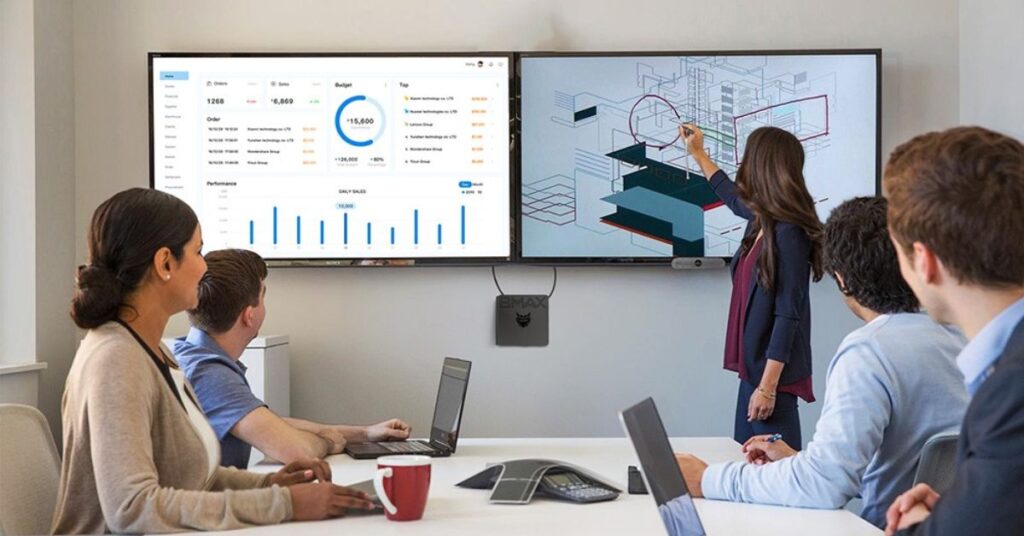In an era where smartphones fit in our pockets and AI assistants respond to our voice commands, understanding technology education isn’t just beneficial—it’s essential. But what exactly is technology education, and why does it matter? Let’s dive into this digital ocean and explore the depths of tech-based learning in the USA. What Is Technology Education?
What is the Meaning of Technology Education?
Technology education isn’t just about learning to code or use a computer. It’s a comprehensive approach to understanding and leveraging technology in various aspects of life and work.
Defining Technology Education
At its core, technology education is about empowering students with the knowledge and skills to understand, use, and even create technological solutions. It’s not just about the ‘how’ of technology, but also the ‘why’ and ‘what if’.
| “Technology education is the study of technology, in which students learn about the processes and knowledge related to technology.” – International Technology Education Association |
This field goes beyond mere computer literacy. It encompasses a wide range of technologies, from simple tools to complex systems, and how they impact our world. What Is Technology Education?
The Goals of Technology Education
The primary aims of technology education include:
- Developing technological literacy
- Fostering problem-solving skills
- Encouraging innovation and creativity
- Preparing students for tech-driven careers
- Promoting ethical use of technology
By achieving these goals, technology education equips students to thrive in our increasingly digital world.
What is Educational Technology?
While often confused with technology education, educational technology (EdTech) is a distinct concept. Let’s clear up the confusion. What Is Technology Education?
Educational Technology vs. Technology Education
Think of it this way: technology education teaches about technology, while educational technology uses technology to teach any subject.
Educational technology refers to the use of technological tools and resources to enhance learning experiences across all subjects. This could include:
- Interactive whiteboards
- Online learning platforms
- Virtual reality simulations
- AI-powered tutoring systems
The Role of EdTech in Modern Classrooms
EdTech is revolutionizing how we teach and learn. It’s making education more:
- Accessible (think online courses)
- Engaging (interactive content)
- Personalized (adaptive learning systems)
- Efficient (automated grading and feedback)
For instance, platforms like Khan Academy offer free, high-quality education to anyone with an internet connection. That’s the power of EdTech!
Careers in Educational Technology
The fusion of education and technology has spawned a whole new career landscape. Let’s explore some exciting opportunities in this field. What Is Technology Education?
Emerging Job Opportunities
Here’s a taste of the diverse roles in educational technology:
- Instructional Designer
- E-learning Developer
- Educational Software Engineer
- Digital Curriculum Specialist
- Learning Analytics Specialist
- Virtual Reality Education Designer
Skills Required for Success
To thrive in these roles, you’ll need a mix of technical and soft skills:
| Technical Skills | Soft Skills |
|---|---|
| Coding (e.g., Python, JavaScript) | Communication |
| Learning Management Systems | Creativity |
| Data Analysis | Problem-solving |
| Multimedia Production | Adaptability |
| UX/UI Design | Empathy |
Explore Greyhound Nation: A Case Study in Technology Education
Let’s look at a real-world example of technology education in action. Greyhound Nation, a forward-thinking school district in the USA, has implemented a comprehensive technology education program.
Innovative Programs and Initiatives
Greyhound Nation offers:
- A “Tech Trek” program where students explore different tech careers
- A maker space equipped with 3D printers and robotics kits
- Coding camps during summer breaks
- Partnerships with local tech companies for internships
Student Success Stories
Meet Sarah, a Greyhound Nation alumna. She credits her high school’s technology education program for sparking her interest in computer science. Now, she’s developing AI algorithms at a leading tech company.
Why is Educational Technology in Education Important?
In today’s digital age, the importance of educational technology can’t be overstated. Here’s why:
Enhancing Learning Outcomes
EdTech tools can:
- Provide immediate feedback
- Offer personalized learning paths
- Make abstract concepts more tangible through visualization
- Enable collaborative learning across distances
Studies show that when used effectively, educational technology can significantly improve student engagement and performance.
Preparing Students for the Future Workforce
With technology evolving at breakneck speed, today’s students need to be adaptable and tech-savvy. Educational technology helps by:
- Familiarizing students with digital tools
- Fostering digital literacy
- Encouraging computational thinking
- Developing skills like online collaboration and digital research
These skills are crucial in almost every modern workplace, from startups to Fortune 500 companies.
What Can I Do with a Master’s in Educational Technology Degree?
If you’re considering furthering your education in this field, you’re in luck. A Master’s in Educational Technology opens doors to diverse and rewarding career paths.
Career Paths for Graduates
Graduates often find themselves in roles such as:
- Chief Learning Officer
- Educational Technology Consultant
- Online Learning Manager
- Education Policy Advisor
- EdTech Entrepreneur
Salary Expectations and Job Outlook
According to the U.S. Bureau of Labor Statistics, instructional coordinators (which includes many EdTech roles) earned a median annual wage of $66,970 in 2020. The field is projected to grow 6% from 2019 to 2029, faster than the average for all occupations.
Educational Technology Examples
Let’s look at some cutting-edge EdTech tools making waves in classrooms across the USA:
- Kahoot!: A game-based learning platform that makes assessments fun.
- Nearpod: An interactive lesson delivery system that engages students on any device.
- ClassDojo: A classroom communication app that helps teachers, students, and parents stay connected.
- Scratch: A block-based visual programming language that teaches coding basics.
- Google Classroom: A free web service that streamlines creating, distributing, and grading assignments.
Importance of Educational Technology
Educational technology is more than just a trendy addition to classrooms—it’s becoming a necessity in our digital world.
Bridging the Digital Divide
EdTech has the potential to level the playing field in education. Online resources and digital tools can provide quality educational experiences to students in underserved areas, helping to bridge the gap between different socioeconomic groups.
Fostering 21st Century Skills
Beyond subject-specific knowledge, EdTech helps develop crucial skills for the modern workplace:
- Digital literacy
- Information management
- Media literacy
- Global Awareness
- Cross-cultural skills
These competencies are essential for success in our interconnected, technology-driven world.
What is the Concept and Scope of Educational Technology?
Educational technology is a field that’s constantly evolving. Let’s take a brief look at its past and potential future.
Historical Development of Educational Technology
Educational technology has come a long way:
1920s: Radio broadcasts for schools
1950s: Introduction of teaching machines
1980s: Personal computers in classrooms
2000s: Internet-based learning
2010s: Mobile learning and adaptive technologies
2020s: AI and VR in education
Future Trends in Educational Technology
Looking ahead, we can expect to see:
- More personalized learning through AI
- Increased use of virtual and augmented reality
- Blockchain for secure, verifiable credentials
- Internet of Things (IoT) in smart classrooms
- Gamification of more learning experiences
The future of educational technology is exciting and full of potential!
Conclusion
In conclusion, technology education and educational technology are reshaping the landscape of learning in the USA and beyond. By embracing these innovations, we can create more engaging, effective, and equitable educational experiences for all students. Whether you’re a student, educator, or lifelong learner, understanding and leveraging technology in education is key to thriving in our digital age. So, why not start exploring the exciting world of technology education today?
FAQs
A: No, it encompasses a wide range of technologies, from simple tools to complex systems.
A: Start small with free tools like Kahoot! or Google Classroom, and gradually introduce more advanced technologies as you and your students become comfortable.
A: Like any tool, EdTech can be misused. It’s important to use it thoughtfully and not as a replacement for human interaction and instruction.






